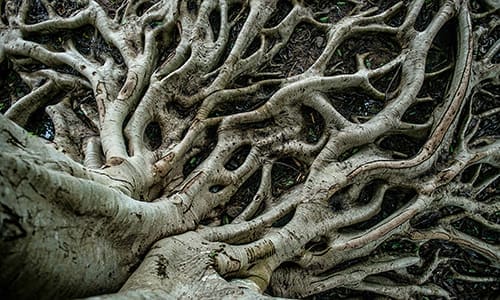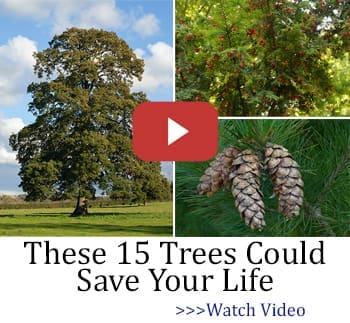While trees are exceptionally beautiful and add a decorative touch to our gardens, dead trees can pose significant dangers to safety and property. Firstly, they become potential hazards during high winds or storms, as they are likely to fall due to their weakened structure.
This can result in property damage, injury, and at worst, loss of life. Also, dead trees can encourage wildfires, especially in barren areas. Therefore, it is essential that homesteaders know the difference between dead and healthy trees.
This is especially important during the winter months when there are several similarities between dead and healthy trees. Here are some tips on how to tell the difference between a dead tree and a healthy one.
Inspect the Bark
In a healthy tree, the bark is fixed to the trunk, and it is firm and smooth to the touch. Changes in the texture and appearance are signs of underlying problems. For example, flaking or peeling indicates pests, disease, or stress.
The bark on a dead tree is typically split or cracked. It may also have cankers which suggests that the tree may be decaying from the inside. The color of the bark will also help you determine the health of the tree. When the tree is healthy, the color is consistent along the entire bark. If it is discolored, dark, or sunken in some areas, there is likely to be a problem.

Are the Branches Bare?
The most obvious sign of a dead tree is branches with no leaves during the growing season. When the tips of branches lose foliage it is known as branch dieback and is a sign of disease or stress. Brittle branches, deadwood, or branches that are easy to break, are signs of structural weaknesses.
The way the branches grow out of the tree is equally as important. A well-structured tree maintains a balanced crown with branches evenly spaced and extending in a natural pattern.
If the branches are half falling off, crossing over each other, or growing unevenly, there may be a problem with the tree structure.
Check for Diseases and Pests
A healthy tree has a natural defense mechanism against pests and diseases. However, when it is dying, it stops working. It is similar to the human immune system, with the first line of defense being the bark. The bark protects the tree against pathogens, but when the bark is damaged, pests and diseases will take over the tree, and if it is not nursed back to health, eventually, it will die. There are several signs indicating that a tree is diseased such as:
- Blight or Leaf Discoloration: Dead patches on the leaves or discolored blotches.
- Soft Wood: Soft wood that crumbles easily.
- Bark Abnormalities: Holes, splits, or deep cracks in the wood.
- Dead Branches: Dry branches that break easily.
- Fungus Spores: Fungus spores covering the bark.
- Root Decay: Fungus in the roots, or broken roots.
- Defoliation: Leaves falling off the tree prematurely.

Pests can cause serious damage to your trees, and if they have an infestation that you can’t get rid of, your tree is most likely to be dead. Some of the most common pests that invade trees include:
Whiteflies
Also known as snow flies, whiteflies feed on the base of leaves. They are tiny creatures that resemble a flattened oval shape in scale form and resemble moths once matured.
Their wings are covered in a white powdery wax-like substance. They leave a plant virus on the trees which can be very dangerous.
Check for whiteflies by examining underneath the leaves, they are typically found around new growth and around the veins. White sticky matter on the leaves is also a sign of whiteflies.
Scale Insects
These insects attack the tree’s bark. They have a hard shell enabling them to penetrate twigs and suck the sap which restricts the growth of the tree. Scale insects cover the bark in a sticky substance that looks similar to soot.
Scale insects prefer maple hosts, ash, willow, dogwood, and lilac trees. You generally find them feasting on trees in early spring.
Scale insects are found around the leaves, fruits, tree branches, and twigs. They use their sharp teeth to chew on phloem and the leaves become discolored and limp.
Signs that your trees have been invaded by scale insects are restricted growth, branch dieback, yellowing, chlorosis, and leaves falling out of season.
Aphids
If your trees are healthy, you won’t need to worry about aphids. However, these insects do pose a significant risk to diseased trees.
They attack the leaves and eat the sap, leaving behind a syrup-like sticky substance called honeydew. Aphids typically attack poplars, oaks, maples, pines, willows, and fruit trees. With their tail-like ends, it is easy to tell the difference between aphids and other pests.
Signs of an aphid infestation include leaves losing their shape or curling, yellow foliage, stunted growth, and dead plant shoots. Any lawn furniture near an infested tree will be covered in sticky discharge released from the aphids.
Examine the Tree Roots
The roots are the most important part of the tree because they extract the water and minerals from the soil, store extra food for colder months, and keep the tree fixed to the ground. When a tree is dying, the roots will start decaying.
When a tree has root problems, it becomes easier for the tree to get blown over because the roots act as an anchor for the tree. Signs of dead tree roots include wilted brown leaves, dead branches, vertical cracks in the trunk, and sudden leaning of the tree.

Fungus on the Trunk
A dead tree will grow shelf fungus around the base. The fungi are so large that it basically looks like a shelf. Fungus is a sign that the trunk is rotting and that the roots have already stopped functioning.
However, you will find small amounts of fungus on a healthy tree, but it only attacks dead tissue, which does not cause any problems. It is the excessive amounts of fungi that you need to worry about.
To avoid the premature death of your trees, inspect them often. As soon as you start seeing signs that your trees are dying, get to work immediately.
Any delay in treating the trees could be fatal. However, it is important to mention that in some cases, you may require professional intervention.
Dwarf Fruit Trees You Can Grow In A Tiny Space
How to Make Bark Bread from a Tree that Grows on Almost Every Street in America (Video)
25 Wood Craft Projects You Should Have In Your Backyard
Ingenious Projects for Endless Hot Water Without Electricity









